What is Custom Menus?
Custom Menus give you the power to...
Show/Hide Menu Items based on Role
Rename both Top-Level Menu Items & Sub Items
Reorder both Top-Level menu items & Sub-Items*
Change Icons for both Top-Level menu items & Sub-Items
and even...
Add new Menu Items*!

*The Custom Menus feature is only available for Thrive & Pinnacle plans.
Custom Menus Summary
If you don't want a Client - or any other role - to view a specific area of the platform, you can accomplish this by using Custom Menus.
You can completely reorder, rename and change the icons for all menu items. If you want to add additional menu items with direct links, you can do that too!
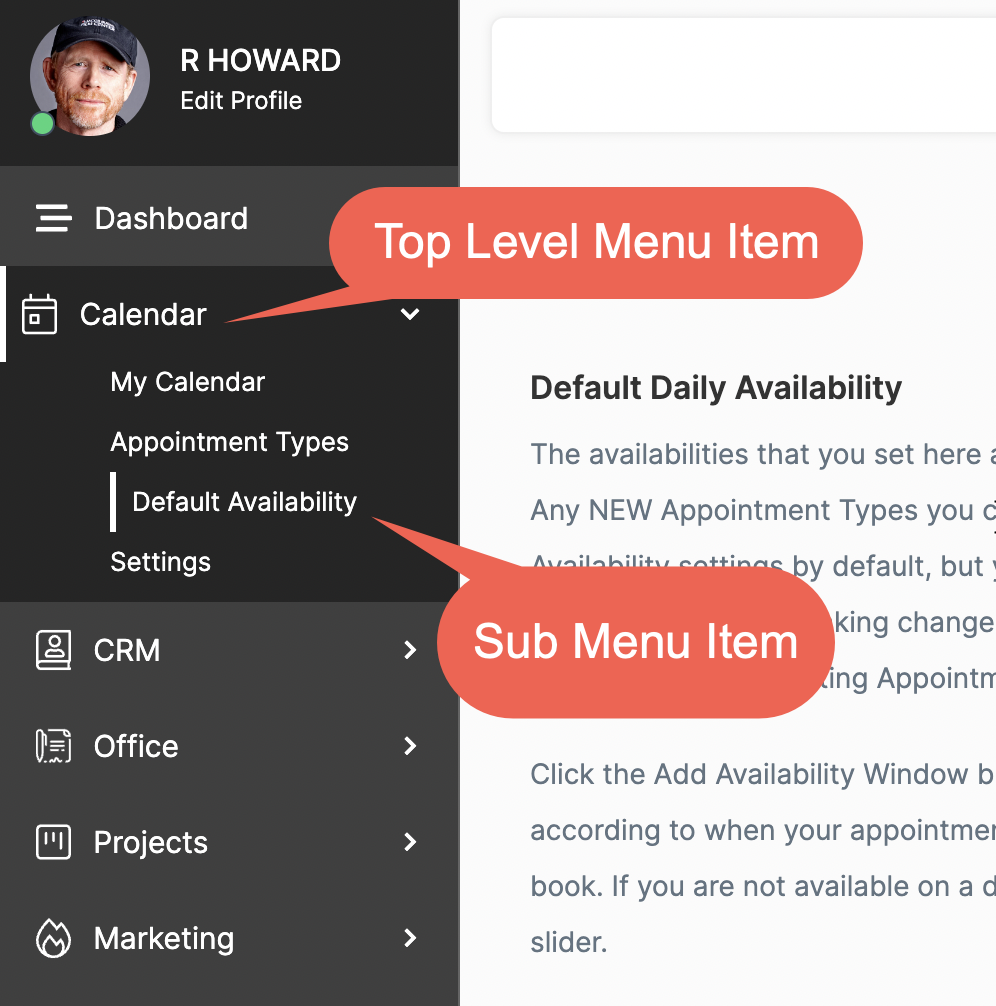
A Top-Level Menu Item is the main Item that will show in your collapsed (unexpanded) list. If it is a direct link, it will not be expandable and therefore will not have any Sub-Menu Items.
A Sub-Menu Item must have its Top-Level Menu Item expanded to access.
Where can I modify the Custom Menus?
To get started, click your profile image on the top left-hand corner of your screen to open the Fly-Out Menu and select Custom Menus.
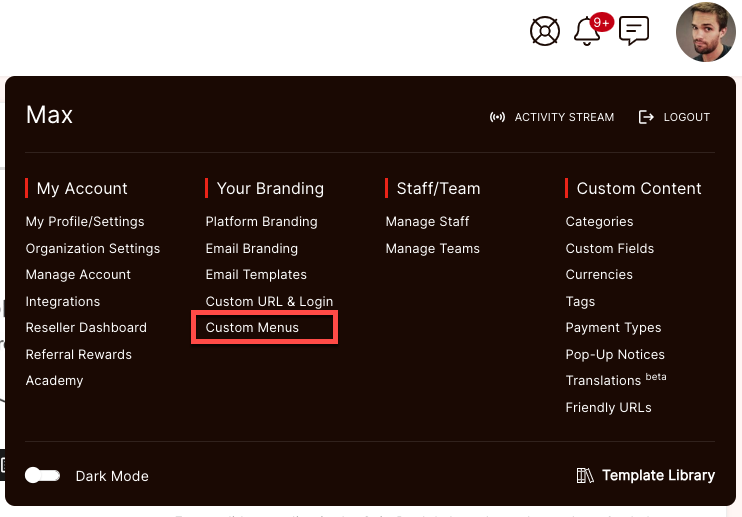
From here, you can use the tabs on the left side to select the role for which you want to show/hide menu items.
IMPORTANT: You will only see the options that are available to that specific Role. Content is not represented in the options for Custom Menus because the visibility or non-visibility of that item is based on whether or not that particular Client/Prospect has been assigned to any Portal Pages. If they have been assigned to Portal Pages, they will see that menu item. If they have NOT been assigned to any Portal Pages, then there will be no Content menu visible to them.
How can I add new Menu Items?
To add a new menu item, click the plus icon.
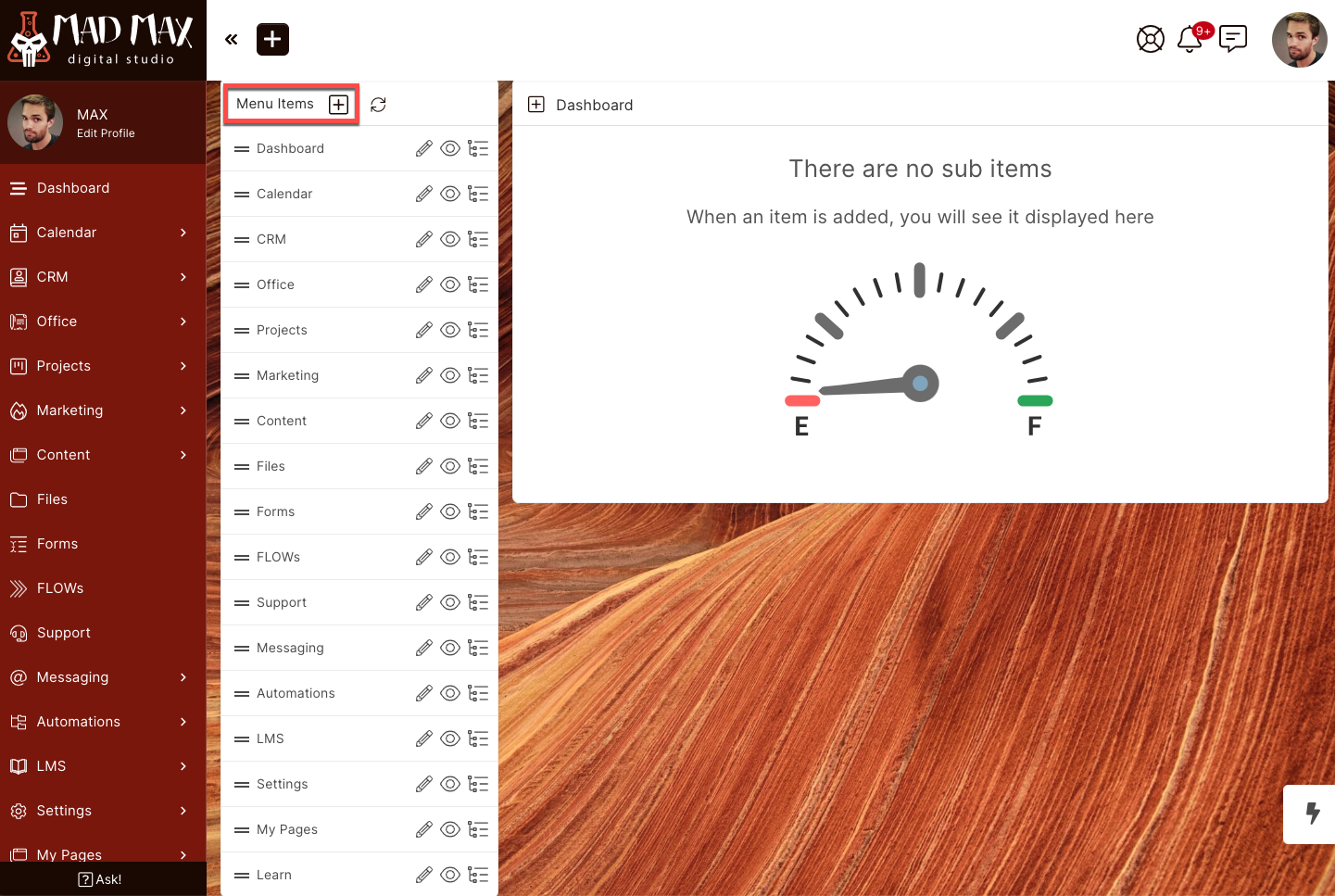
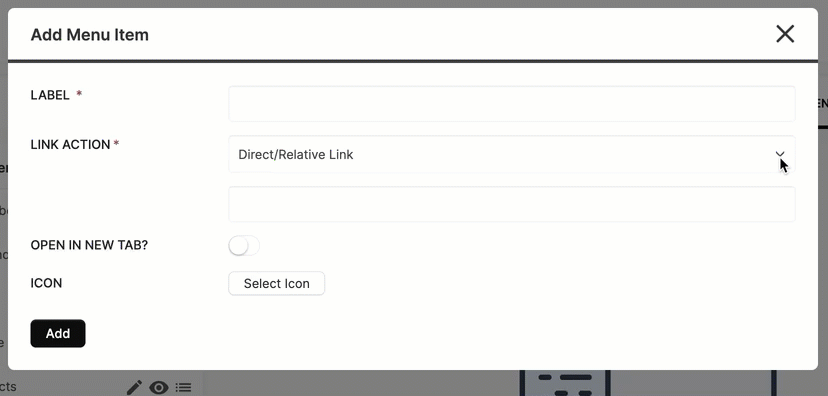
Once you've made your Link Action selection you have a few more options available to you.
Auto-Template: When toggled on you will be able to select a pre-configured Auto-Template from the dropdown. You have the option to include a Success Message that will appear when this menu item is clicked. You can also limit the number of triggers/clicks and determine what to do once that limit has been reached.
Open In New Tab: When toggled on this menu item will open in a different tab than the user is currently in.
Icon: Click Select Icon to open up the icon options that are available.

LINK ACTION
When adding New Menu Items to Custom Menus the same Options appear as in the Button Block.
Direct or Relative Link:
In the URL field, you are able to add either internal links that link to key locations within the platform or you can add external links to outside sources/web pages.
Link to URL from Custom Field:
Select from a URL you already have saved in Custom Fields. This will direct the user to the data provided from a URL Custom Field which can be unique for each user.
Create New Work Request:
Navigate your user to submit a Work Request.
Send to [Platform Area]:
You can select from an extensive list of areas in the platform to direct the user to:
assigned Start Page, Project(s), Project Client Talk, Project Files, Calendar, New Message, List of Contracts Awaiting Signature, Contact’s “Shared With Me” Folder, the My Billing Dashboard, List of Estimates w/ Open Status, List of Invoices w/ Open Status, List of Proposals w/ Open Status, List of Subscriptions, History of Payments
Trigger Auto-Template
Select a pre-configured Auto-Template from the dropdown. When a user clicks on this menu item the Auto-Template will immediately trigger. You can limit the number of triggers/clicks by toggling that setting on and filling out the info below.
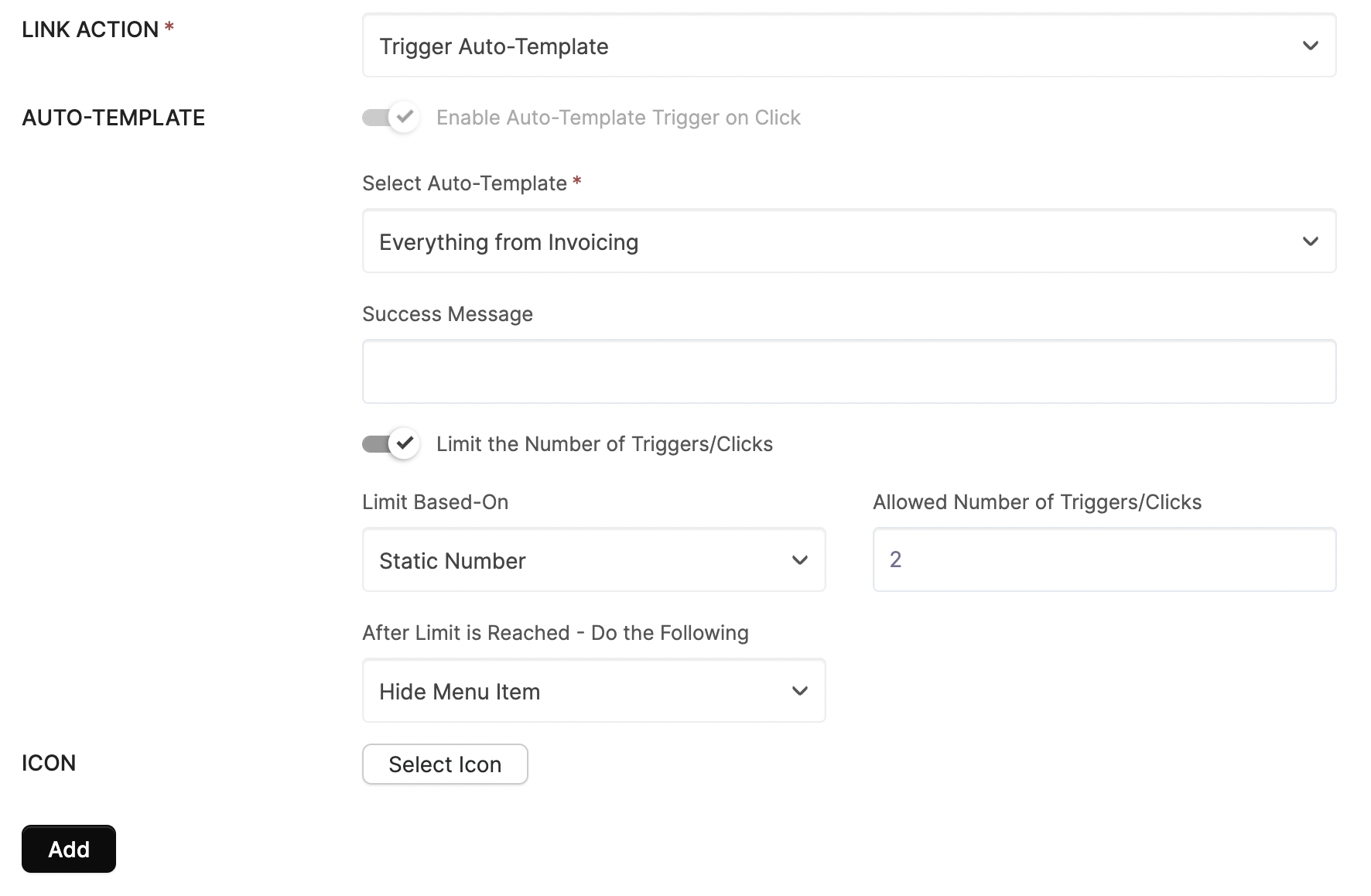
Direct Link to Portal Page:
Direct the user to a particular Portal Page.
If you want one of your Sub-Menu Items to be one of the Top-Level Menu Items instead, you can configure that here.
For example, let's say you wanted to make Account Overview a Top-Level Menu Item. As of now, you need to navigate to Content > Account > Account Overview.

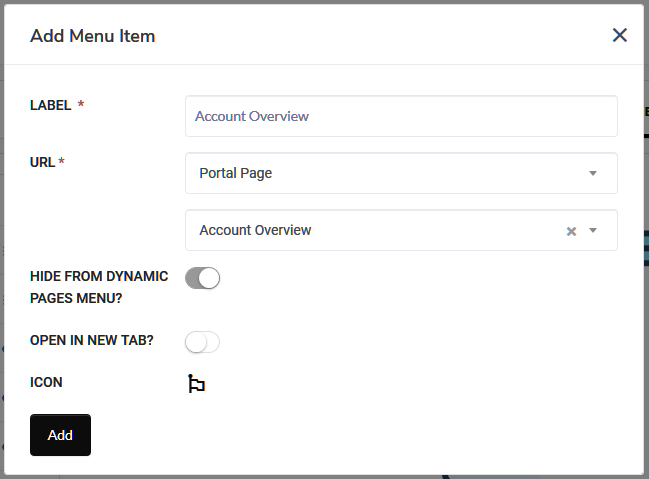
You can choose to Hide from Dynamic Pages Menu. This will make it so that the Sub-Menu Item is no longer visible. Otherwise, you will have two links to the same page.
Once the Menu Item has been added, you can click it and drag it to order your Menu Items however you'd like. In this example, it has been placed as the first Item.
TIP: Role-based permissions do not apply to the Dynamic Pages Menu. The Dynamic Pages Menu (DPM) is automatically built "on the fly" each time a user logs into the platform. To learn more about Custom Menus and Dynamic Portal Pages, click here.
FromCustom Menus, you can control where this menu item is placed, and you can change the label of the menu item.You can manage whether or not Portal Pages show in the DPM from the assignments areaof the appropriate Portal Page(s).
Account Overview is now a Top-Level Menu Item for your Client and is no longer a nested Sub Menu Item!
IMPORTANT: Please note that when a Portal Page is set as the Top Level Menu Item, you cannot add Sub-Menu Items to it. This is because a Portal Page is an actual link and not simply an expandable/collapsible panel. If you want to add Sub-Menu Items, change the Top-Level Item to a Direct/Relative Link and set the target URL to #.
Dynamic Pages Menu
It is automatically populated with only the Portal Pages that the logged-in user has permission to view and that is the reason you are not able to set the visibility using Custom Menus. If the logged-in user has not been assigned to any Portal Pages then the Content menu item will not show at all to that particular user.
Custom Menus with Circle Assignment
A special feature of Custom Menus is setting visibility for specific Circles. Unlike the across-the-board toggles for Roles, you can pick and choose exactly which Circles you would like to have access to.
You will see this option for any Menu Item that can be accessible for Contacts.
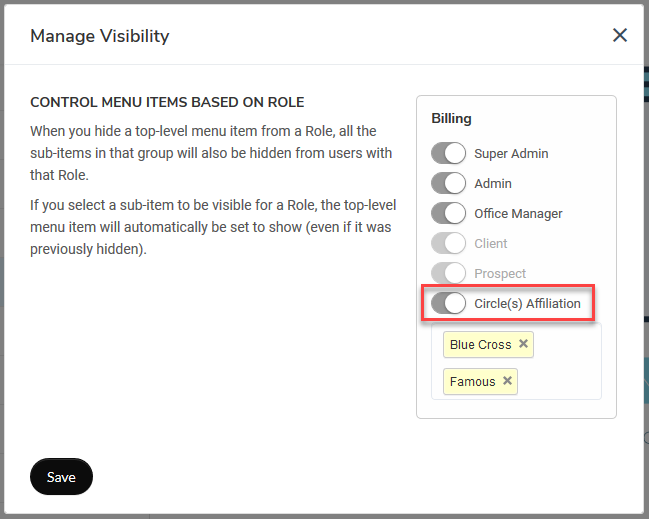
Once enabled, a dropdown menu will appear in which you can select multiple Circles.
Managing Visibility using Custom Menus
When you first access Custom Menus, you will see the view below.
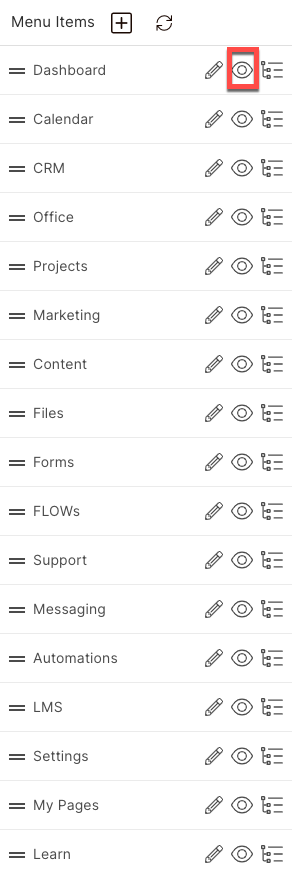
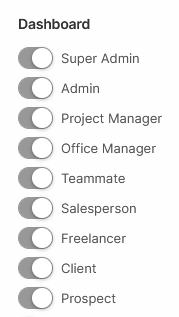

TIP: When you hide a Top-Level Menu Item from a Role, all of the Sub-Menu Items in that group will also be hidden from users with that Role. Conversely, if you select a Sub-Menu Item to be visible for a Role, the Top-Level Menu Item will automatically be set to show (even if it was previously hidden).
How do I rename Menu Items?
To rename Menu Items, simply click on the pencil icon next to the menu item that you want to rename.
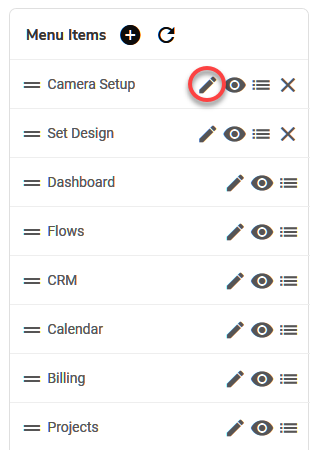
The Content Menu Item is a special case. When you change the name in Custom Menus, it will only be reflected in the "Staff/Internal" views of the menu.
To change the name of Content for Contacts/Externals, you'll need to use our Translations tool.
CLICK HERE to learn about Translations (beta)
How do I reorder Menu Items?
To reorder Menu Items, just click one and drag it to your desired location.
